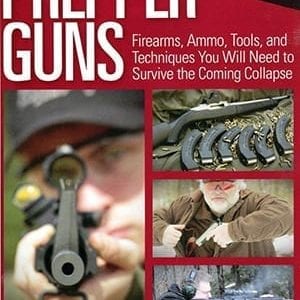The Question of Bullet Performance
There is a popular theory that a big game bullet should stay in a big animal’s body, “dumping all its energy” and unfortunately many hunters are accepting it as gospel.
Personally, I find it irresponsible.
A .22 LR will always stay in the deer, dumping all its energy and often resulting in the termination of the deer. Does that make it a deer cartridge?
Of course not.
When applied with modern rifle cartridges, this theory can produce some spectacular results, but those hunters who persist in using it as a guide for choosing their bullets and cartridges are courting disaster. There are far too many variables such as impact velocity, bullet path, game size, material penetrated, physiological variables in the target animal and many more for this to ever work.
Consider that a .220 Swift with a 40 gr. bullet at 4,100 ft/s generates 1,493 ft-lbs of energy, far more than any generally accepted 1,000 ft-lbs minimum for whitetail deer. If you place that bullet precisely in the lungs the deer will likely drop as if hit by lightning. Move the impact a few inches forward to the shoulder and he may well run off. If he is lucky, the coyotes will find him soon and end his suffering. Both shots dumped all their energy into the deer’s body, so what happened?
You must remember that death is not a result of energy transfer, but of tissue destruction. Dumping energy is useless if it does not result in damage to vital tissue. The bullet that hit the shoulder likely fragmented and failed to penetrate through anything important. I have seen this happen even with large cartridges. I once shot a deer at close range with a 7mm STW cartridge and a well known bullet. The bullet blew up and failed to penetrate through the rib cage.
Whitetail deer are our most popular big game animal and as a result are the basis for most hunters’ experiences. The fact that whitetails are relatively easy to dispatch and that most hunters today use a rifle chambered for a cartridge that is more powerful than is necessary, allows even the poorest bullets to drop the deer most of the time. But with bad bullet and/or cartridge choices, sooner or later one of the variables will enter into the equation and the result will be a wounding loss. Try it with bigger game, particularly something inherently tough like elk or bears and sooner or later it will bite you in the backside. (The bear might too!)
The other end of the equation is a bullet that passes completely through the animal, but due to its design does not expand and causes very little tissue damage with results that are just as poor.
An ethical hunter will choose a cartridge of adequate power for the game hunted and match it with a quality bullet. For most North American hunting this bullet should be designed to expand on initial impact and to hold together enough to continue completely through the animal, under all but the most extreme conditions.
Ideally, the bullet will retain much of its original length and weight to aid in penetration and to help keep it on its original course. This will create a substantial wound channel through every part of the animal the bullet passes through. I like the bullet to exit with lots of retained energy as that creates a large wound channel all the way through the animal. Expansion insures that the increased diameter of the frontal area will transfer energy to the surrounding tissue as it passes through, causing damage through actual contact, hydraulic shock and secondary projectiles such as bone fragments.
Wound channels are relative to energy transfer and the frontal area of the bullet. Consider how it would look if the animal were a homogenous material, like ballistic gelatin. As a bullet first contacts, the wound channel is bullet diameter. Then, as it penetrates, the wound diameter will grow relative to the energy transferred and the contact damage caused by the expanding bullet diameter and shape. If the bullet is going to stay in the game and velocity slows as energy levels drop, the wound channel diameter will again begin to taper until it reaches current bullet diameter at the point where it stops. This results in a misshapen football shaped wound channel, with a large maximum diameter; fine if it’s in the right place, but if it ends short of vital tissue, problems arise.
With proper bullet design and plenty of initial energy the bullet exits with energy remaining. The resulting wound channel has a minimally decreasing profile and will remain near the maximum diameter all the way to the exit.
So what if the bullet exits with remaining energy? The important thing is that it created a sufficient wound channel completely through the target. Even though that wound channel diameter may be less at its peak than that created by a bullet that dumps all its energy and fails to exit, the wound channel is much longer and has a better chance of passing through something vital. It may also have a larger volume than the wound channel from a soft bullet that over expands and stays in the animal.
The results may not be as spectacular as a lung hit with a bullet that tears itself apart, dumps its energy and fails to exit, but it is much more predictable, reliable and consistent. These are far more desirable traits for an ethical hunter than dramatic impact results with a high failure potential.











